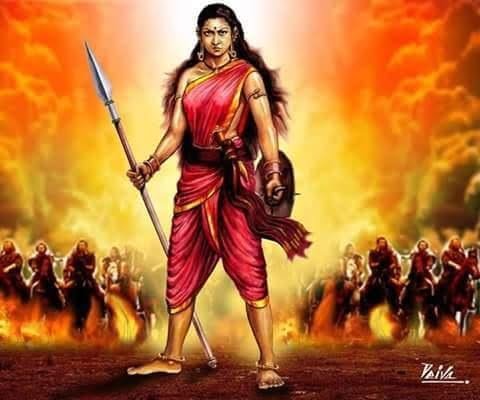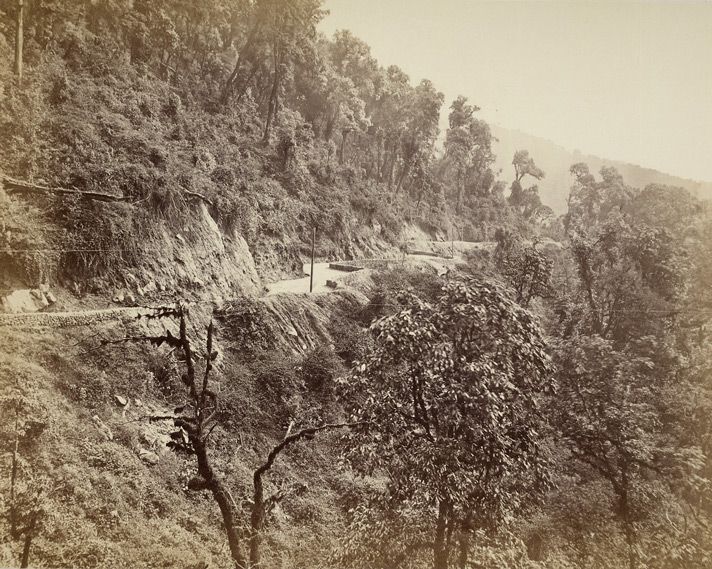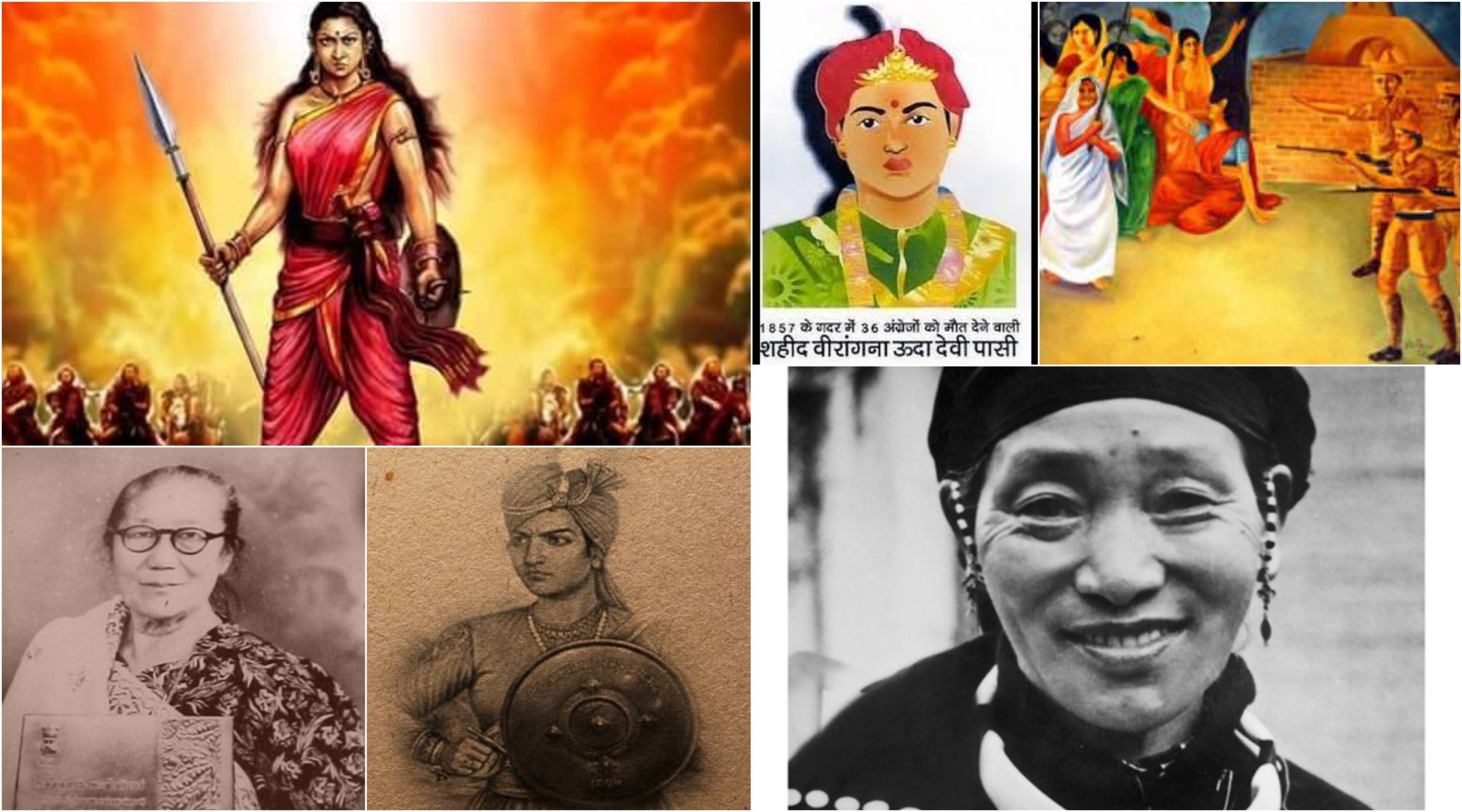While caste and ethnic hierarchies have existed before, during, and after the colonial rule, the Nationalist Movement for an Independent India had witnessed a significant amount of participation from its caste and ethnic minorities. People from Dalit, Bahujan, and Adivasi communities fought many battles and wars against the oppressive colonial rule, while simultaneously fighting local and regional forms of marginalisation which were engendered by brahmins and the upper caste groups. However, due to historiographic invisibility, their resistances fail to feature on our history books. On its 74th Independence Day this year, we look back at those Dalit, Bahujan and Adivasi women whose contributions to the Nationalist movement against the imperial exploitation is seldom acknowledged due to the multiple gaps in documentation in history as well as in contemporary times.
Kuyili
Kuyili was the Commander-in-Chief to Velu Nachiyar, the Queen of Sivagangai, a place in the southern part of Tamil Nadu near Ramanathpuram. The Queen was one of the first monarchs to have fought against the British Rule, around the year 1780, and in that war, Kuyili sacrificed herself to save her land—Sivagangai.

Remembered by her admirers as ‘Veerthalapathy’ (The Brave Commander) or ‘Veeramangai’ (The Brave Woman), this freedom fighter was born in a lower caste family of Arunthathiyar. In her early days, her father who worked as a spy for the Queen, helped Kuyili familiarise with the order of the day and become a companion to Velu Nachiyar. She protected the Queen’s life multiple times and was employed as her bodyguard and later the Commander-in-Chief for the women’s army.
She fearlessly led her army and deceived the British officials by hiding their weapons, to enter the Sivagangai Fort to attack their oppressors. The unprepared British army could not comprehend this attack and Kuyili was successful in giving life to her plans of destroying the weapons of the Britishers. In the process, drenched in oil, she set herself on fire and self-sacrificed her life. Her courage as a lower caste woman, fighting against odds and oppression, is commemorated to date.
People from Dalit, Bahujan and Adivasi communities fought many battles and wars against the oppressive colonial rule, while simultaneously fighting local and regional forms of marginalisation which was engendered by brahmins and the upper caste groups. However, due to historiographic invisibility, their resistances fail to feature on our history books. On it’s 74th Independence Day this year, we look back at those Dalit, Bahujan and Adivasi women whose contributions to the Nationalist movement against the imperial exploitation is seldom acknowledged.
Jhalkaribai
One of the most trusted companions and advisors of Rani Laxmibai, Jhalkaribai was a Dalit warrior from the Kori caste, who played a pivotal role in what is known as the first war of Independence—the Revolt of 1857 against the colonial government. She was born on November 22, 1830, in a humble family in a village near Jhansi. Belonging to an oppressed caste, and living a life of poverty, Jhalkaribai was unable to receive a formal education. However, she did learn a few other skills such as the art of weaponry and horse-back riding. Various folklores are often heard around her ability to fight dacoits and wild animals in her local village, from a very young age.
Impressed by her skills, Jhansi ki Rani inducted her in the women’s wing of the army, where Jhalkaribai was trained to shoot and ignite cannons to fight the wars against British rule. Due to the uncanny resemblance that Jhalkari had with Rani Laxmibai, she disguised herself as the Queen and took command of the army on the battlefield during the Rebellion. Even after having adequate consciousness about the perils of war, she did not reconsider her decision and walked right up to the opposition’s camp. Her death however remains uncertain and various conjectures are built around the same.
Mostly neglected, Dalit women’s histories of bravery for India’s independence are often erased by upper caste and savarna systems of documentation. The recent portrayal of Jhalkaribai in Kangana Ranaut’s Manikarnika, played by Ankita Lokhande, fails to capture her sheer courage and valour that she had exhibited in the battle against the British army.
Uda Devi
A Dalit freedom fighter, Uda Devi and her courageous Dalit sisters or Veeranginis (warriors) fought fearlessly against the British administration, during the Revolt of 1857 against the British East India Company—infamous for looting local resources. She approached Begum Hazrat Mahal to enlist her as a warrior and help her in forming a women’s battalion under her command.

Uda Devi was born in a small village in Awadh, in present-day Uttar Pradesh. She belonged to a non-dominant caste called the Pasi caste, whose history like most other lower caste histories have not been documented effectively. Her contribution deserves even more acknowledgement because, contrary to what most history books would emphasise around the Revolt of 1857 as fought by the royals or by the nobilities, women from lower and oppressed castes played equal or more crucial roles to challenge the British hegemony.
Today, each year on November 16, people from the Pasi caste celebrate her contributions for India’s independence against the colonial government and remember her as a feisty and valiant Dalit woman who defied both caste and gender hierarchies enforced by the brahminical and patriarchal society.
Helen Lepcha alias Sabitri Devi
Born in the year 1902, hailing from a village called Sangmoo near Namchi in South Sikkim, but residing in the then British-occupied Kurseong, this fierce freedom fighter was inspired by Gandhi’s Charkha Movement which had gained momentum at that point in time. Helen Lepcha or better known as Sabitri Devi partook in the relief measures that were carried out in Bihar in the year 1920 as the state had confronted massive floods that affected the people from lower echelons of the society. Impressed by her work, Gandhi invited her to his Sabarmati Ashram. She was also renamed as “Sabitri Devi” by Gandhi.
The Britishers found her dedicated anti-colonial stance and activities as notorious and they had also issued a warrant in her name. She was hounded by the British Police officials and was one of the most-wanted congress leaders. Once she was also open fired at; fortunately, she escaped unhurt. She built a strong rapport with other leaders like Sarojini Naidu, Jawaharlal Nehru, Morarji Desai and worked closely with them for India’s independence.
She also played a significant role in the Non-Cooperation Movement, where she led a rally of thousands of labourers in Kolkata, beside eminent nationalist leaders like Gandhi, Maulana Abdul Kalam Azad, Chittaranjan Das, to name a few. She also mobilised people from in and around Kurseong during the Non-Cooperation Movement by starting door-to-door campaigns against foreign goods, for which she was later imprisoned by the Britishers.
Along with battling the British rule for India’s independence, she also immersed herself in social activism. She was the chairperson of various associations in Kurseong like the Sherpa Association, Nagar Congress, Anjuman Islamia and the Lepcha Association. Because of her dedication to the collective betterment of the society, the Tribal Welfare Department, Government of West Bengal also honoured and recognised her contributions by conferring on her “Reward to Tribal Headman of the District”.
Also read: The Partition Of Bengal: Challenges Faced By Women And Migrants
Rani Gaidinliu
Often referred to as the “Rani of the Nagas”, first described by Jawaharlal Nehru, Rani Gaidinliu, at the age of 16, evaded the Britishers, before being captured and sentenced to life imprisonment, which ended only after India’s Independence.
Rani Gaidinliu was born on 26th January 1915 in Nungkao (or Longkao) village in the present-day Tousem sub-division of Tamenglong District, in western Manipur. She belonged to the Rongmei Tribe under the umbrella Zeliangrong Tribe and at a very young age, despite the lack of formal education, she became a leader under the influence of her cousin, Haripao Jadonang, who had organised the Heraka socio-religious and political movement to condemn the British rule.
She mobilised people from the Zeliangrong tribe to resist paying taxes to the colonial regime. Successful in her endeavour, Gaidinliu led these people to emerge out of imperial subordination by refusing to aid the British in any manner and helped them evade the British forces from one village to another, across the states of present-day Assam, Manipur and Nagaland. Due to the growing anxieties around her anti-British stance, the special Assam Rifles contingent was prompted to arrest her immediately. She was later captured by the Britishers, handcuffed and taken to Kohima on foot. Her associates were either imprisoned or executed. She was only released after India became independent. After spending several years of her life in jail, she later continued to work for the betterment of backward groups in India.
These women, belonging to communities or groups, which were historically denied equality in socio-political and economic spheres fought against the British as well as the local forms of colonialism by privileged groups. They aspired for freedom and independence from oppressive structures that were established by the powerful authorities, be it the colonists or the brahmins and the upper castes.
Rani Gaidinliu is infamous today among many Naga groups for her vehement support of the Heraka movement, which is often perceived as anti-Christian and pro-nationalist. Such an ideology was condemned by the Naga National Council (NNC) post-India’s independence, which as an organisation advocated separatist agenda and demanded a state of their own. Further, in the 1970s, she was seen as a Hindu cult promoter as the Hindu Right Wing extended their support to the Heraka religious movement, which created a rift between the groups.
Putalimaya Devi Poddar
A Gorkha woman, born on 14th January, 1920, in Kurseong, Putalimaya Devi Poddar was renowned within her community for fighting both against the imperial and social order. She was barely 14-15 years of age when she wanted to join the Congress Party to contribute in the freedom struggle against the Britishers. Later when Kurseong had established an office for the Congress Committee in 1936, the highly patriotic Putalimaya finally was able to concretise her ambition of becoming a freedom fighter, despite being repeatedly discouraged by her father. However, her fight and activism did not end there. She also started a Harijan Samaj in Kurseong which dealt with mobilising Dalits and Shudras to grow interested in and receive an education. She also founded a women’s organisation which motivated girls to become patriotic leaders for the community and invoke nationalist sentiments to fight the colonial regime.

Poddar was repeatedly sent warnings or called to the Police Station by the British officials during this period. However, this did not deter her from organising and leading the freedom movement from Kurseong, as well as its neighbouring areas of Darjeeling and Kalimpong. At the same time, when in Bombay, on 8th August 1942 a call for Swaraj was evoked, later leading to the arrest of prominent nationalist leaders, in Kurseong, a few days later, organised a huge Jan Sabha which led to her arrest by the British Police officials.
Even after the Independence of India, Putalimaya Devi continued her activism as a Samaj Sevika. She was awarded the name “Swatantrata Senani” and “Tamra Patra” by the then Government of India. Common people addressed her as “mataji” as she continued working as the President of Mahukuma Congress Committee of Kurseong and Vice-President of Darjeeling Zilla Committee. She breathed her last on 1st December 1984.
Conclusion
These women, belonging to communities or groups, which were historically denied equality in socio-political and economic spheres fought against the British as well as the local forms of colonialism by privileged groups. They aspired for freedom and independence from oppressive structures that were established by the powerful authorities, be it the colonists or the brahmins and the upper castes.
Such histories and individual biographies tend to linger on for years and centuries, as examples of a time when people, despite their structural subordination, rose up against the repressive and brutal forces of authority. Not only do the contemporary lower caste groups and indigenous people value, honour and look up to these women as role models, but even the privileged sections of the society can garner inspiration from them who refused to bow down to anti-democratic and dictatorial troops.
Also read: Jyotirmoyee Devi: A Writer Who Documented Gender During The Bengal Partition…
Their struggles as well as their moments of unconditional bravery must be included in our discourses, in books and media, and in our collective memories. Only then can our present-day independent India stand up for the rights of the marginalised people of its society.
Disclaimer: This list is not exhaustive. Please visit websites such as Velivada, Dalit History Month for more such historical accounts.
About the author(s)
Pragya is a Master's Graduate in Sociology from Jawaharlal Nehru University. She works as the content editor at Feminism In India. She is also a ramen enthusiast, a hummus mother, a postcard hoarder and a wannabe cat lady. She still prefers writing on her notebooks, rather than on her laptop, but her job demands her to do just the opposite. Her favourite season is spring, and her alter ego is that of Mrs. Dalloway who said, "She would buy the flowers herself", in case no man ever buys her any!




